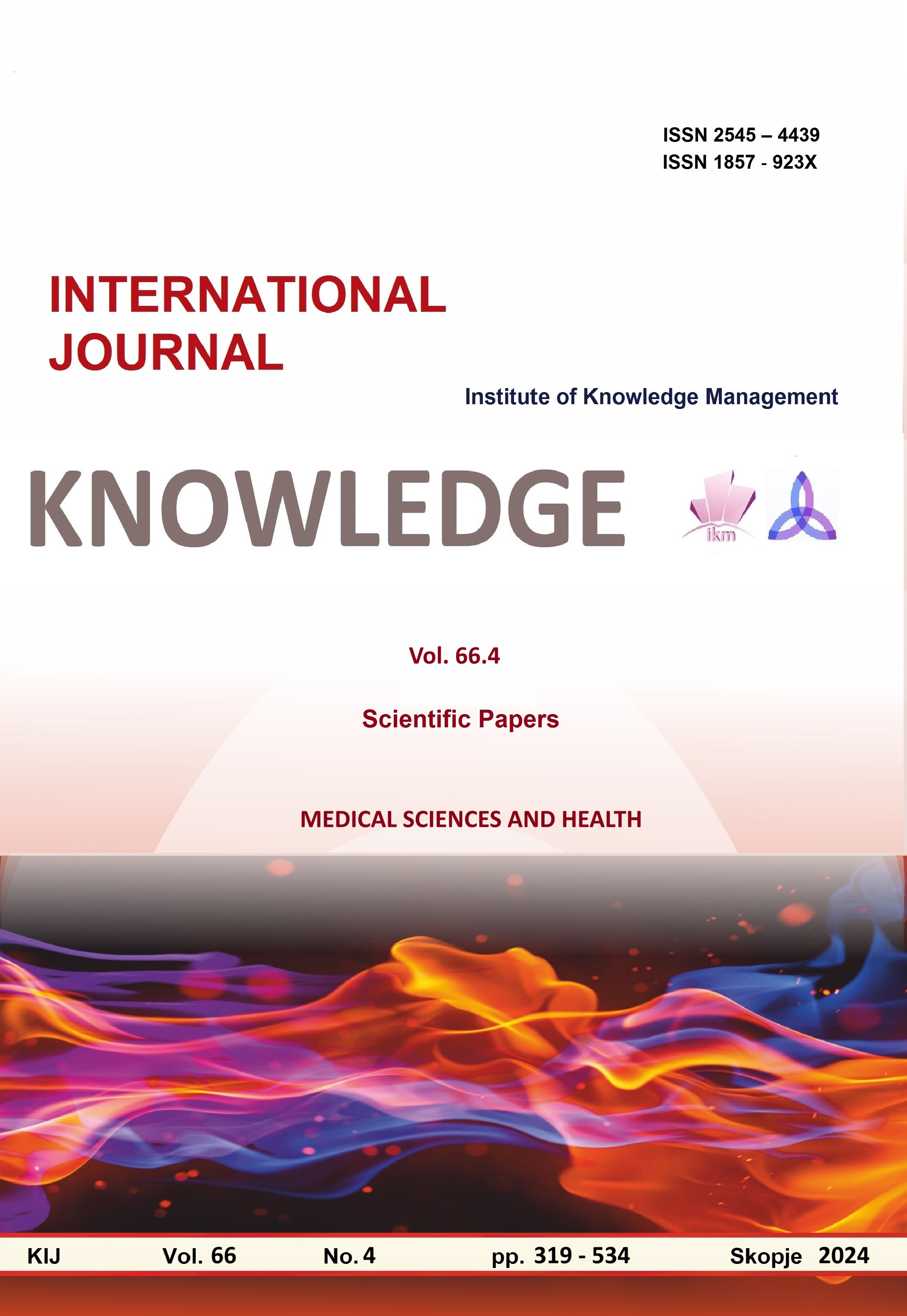КАРИЕС ВО РАНО ДЕТСТВО
CARIES IN EARLY CHILDHOOD
Author(s): Sanja NashkovaSubject(s): Social Sciences, Education
Published by: Scientific Institute of Management and Knowledge
Keywords: caries in early childhood;primary teeth;children;therapy
Summary/Abstract: Caries of primary teeth can appear very early, shortly after their emergence, as a result of bad habits and inadequate nutrition. The occurrence of caries in this period is emphasized by certain difficulties in maintaining oral hygiene, as well as parents’ lack of information about the importance of primary teeth and the possibility of preserving their health. Caries in early childhood or also called circular caries is a specific form of dental caries that differs from the usual forms of caries in the time of occurrence, localization, course, therapy, outcome and consequences. Caries is most often localized in the front of maxillary teeth and first molars. This type of caries is given different names such as rampant caries or bottle syndrome ("baby bottle caries", "nursing caries") or also referred to as caries in early childhood, as a definition of active caries for the age of 0-3 years. There are different explanations for the appearance of circular caries, although the etiology is the same as in other forms of caries of milk and permanent teeth. This type of caries is often associated with bottle feeding and the use of liquid, sweetened and mushy food, frequent day and night meals during this period. During this period, bad eating habits of the child are formed, which can be extremely important for the occurrence of caries. Circular caries can also occur in children who are fed in a natural way and have not used a bottle or a pacifier, but with acquired bad habits such as long and frequent meals, keeping food in the mouth and frequent and uncontrolled use of sweets between meals. Circular caries is characterized by specific localization. It appears on caries resistant, smooth, labial and oral surfaces of incisors, canines and primary molars, but also on caries predilection sites in fissures, pits and proximal surfaces. The treatment strategy for this type of caries should include all possibilities to stop caries or reduce caries activity, using general and local procedures. General procedures include information, motivation, advice on preventive measures during subsequent visits. Caries arrest and preventive measures such as dietary advice, oral hygiene guidelines and the use of fluorides must be tailored to each patient individually. Local procedures include professional cleaning, careful removal of plaque and soft tooth tissue with hand instruments, application of fluoride varnish or a thin layer of glass-ionomer cement. Restorative treatment techniques may include the use of glass-ionomer cements, composite materials, and compomers. Prosthetic therapy of circular caries is performed after conservative treatment of teeth and extraction of teeth that cannot be repaired. Taking care of circular caries, especially in some difficult cases, is a very complex and complicated task that requires good knowledge of other dental disciplines and extensive experience in working with children.
Journal: Knowledge - International Journal
- Issue Year: 66/2024
- Issue No: 4
- Page Range: 339-344
- Page Count: 6
- Language: Macedonian

